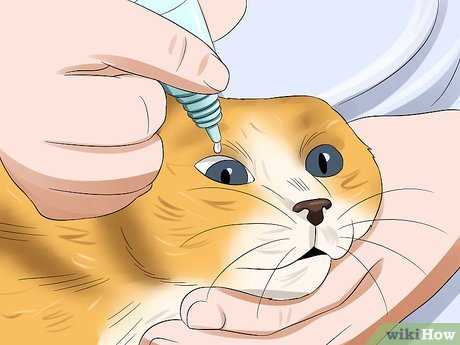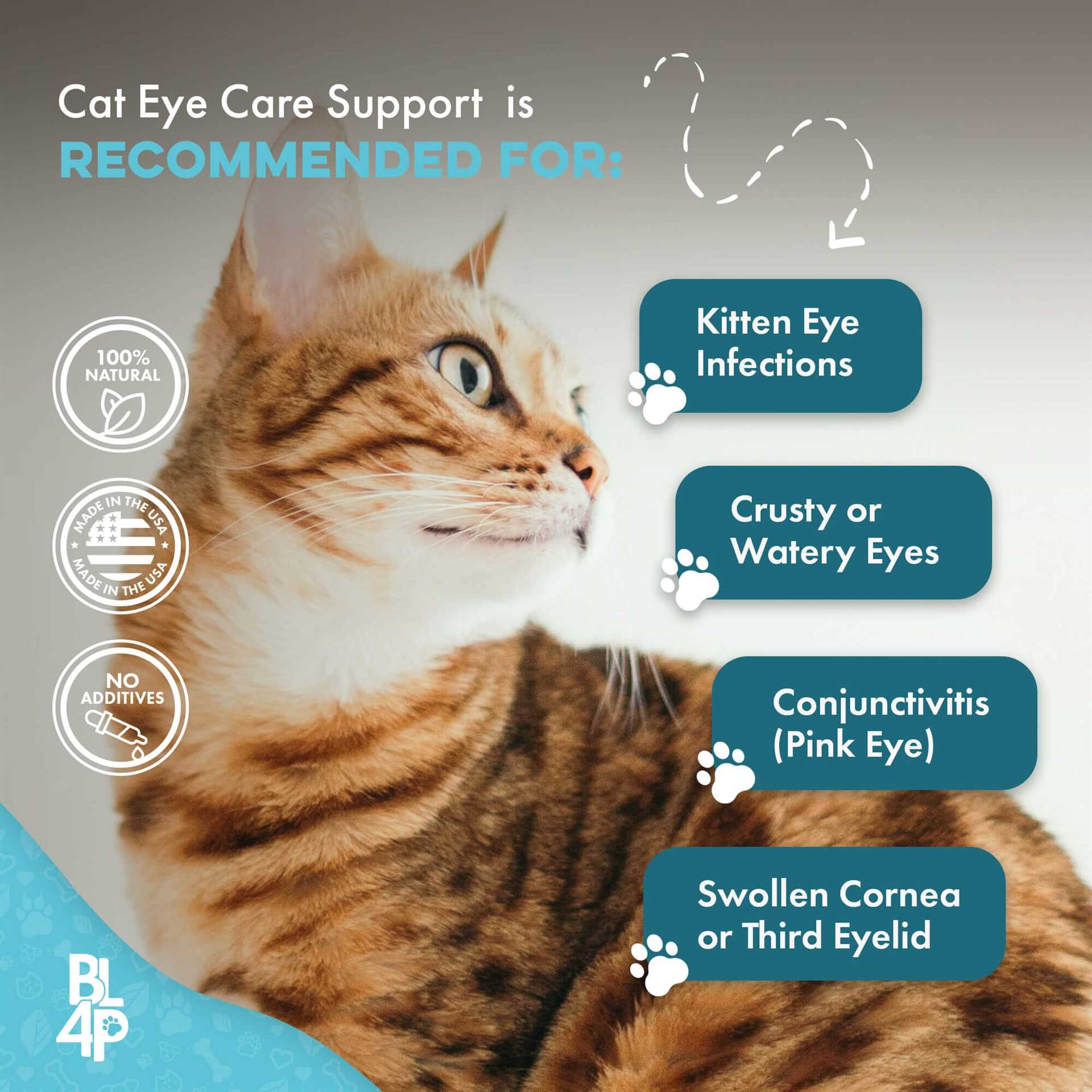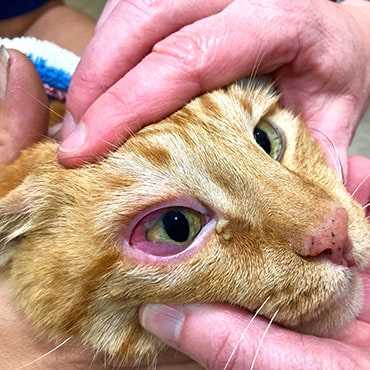For eye inflammation in furry friends, immediate veterinary consultation is necessary. An eye examination will determine the underlying cause, whether it be an infection, allergy, or foreign body. Once diagnosed, a veterinarian may prescribe specific medications or treatments tailored to the condition.
Common treatments include antibiotic eye drops or ointments if a bacterial infection is present. If allergies are responsible, antihistamines or corticosteroids may be recommended to alleviate symptoms. Regular cleaning of the affected area with a warm, damp cloth can help remove discharge and keep the eye area clean.
Ensuring a comfortable environment plays a significant role in recovery. Keep the space quiet and stress-free, and monitor for any changes in behavior or appetite. If symptoms persist, a follow-up visit to the veterinarian is crucial for reassessment and potential adjustments to the treatment plan.
Identifying the Symptoms of Conjunctivitis in Cats
Noticing the following signs can indicate a problem with the eyes. Redness around the eyelids or conjunctiva is often the first visible symptom. Swelling of the eyelids may accompany this, making them appear puffy. Excessive tearing or discharge is common, with the fluid ranging from clear to yellow or green. Frequent blinking or squinting can also signal discomfort.
Common Symptoms Table
| Symptom | Description |
|---|---|
| Redness | Visible redness in the eye area, often near the eyelids. |
| Swelling | Puffy appearance of eyelids, indicating inflammation. |
| Discharge | Excessive tearing with fluid that may be clear, yellow, or green. |
| Blinking | Frequent or excessive blinking, showing sensitivity to light. |
| Sensitivity | Squinting or avoiding bright light due to discomfort. |
Monitoring behavior can also provide clues. If the feline seems more irritable or withdrawn, it might be due to eye irritation. Changes in grooming habits, like neglecting to clean the face, are worth noting as well.
Consulting a Veterinarian: When to Seek Professional Help
Any sign of discomfort in the eyes warrants a visit to the vet. If symptoms persist for more than a couple of days or worsen, professional evaluation is necessary. Redness, excessive tearing, or discharge can indicate more serious conditions requiring immediate attention.
Should there be swelling around the eyes or persistent squinting, these are clear signals that a feline expert needs to assess the situation. Eye infections can escalate quickly, and timely intervention is crucial for preserving vision and overall health.
Additionally, if there are accompanying symptoms such as lethargy, loss of appetite, or fever, it’s critical to consult a veterinarian without delay. These could point to underlying systemic illnesses that require comprehensive care.
For those considering dietary adjustments, a proper diet can support overall well-being. For instance, exploring options like cat food for cats with ibd could be beneficial in conjunction with medical treatment.
In summary, vigilance is key. Regular check-ups and prompt veterinary consultations can make all the difference in maintaining eye health and preventing complications.
Administering Eye Drops: Step-by-Step Instructions
First, gather all necessary supplies: eye drops, a clean towel, and treats for positive reinforcement. Make sure the drops are at room temperature to avoid discomfort.
Preparation
Choose a quiet area to minimize distractions. Have a friend hold me gently, or wrap me in a towel, leaving only my head exposed. This keeps me calm and prevents sudden movements.
Application
Hold the eye drop bottle in one hand, tilting it slightly. With the other hand, gently pull down on my lower eyelid to create a pocket. Aim the dropper above my eye, being careful not to touch my fur or the eye itself. Squeeze the bottle to release one drop into the pocket. Avoid letting me blink immediately; gently stroke my head to keep me calm. After the drop is in, reward me with a treat to create a positive association.
Repeat this process for the other eye, if necessary. Always follow the vet’s instructions regarding dosage and frequency. If there’s any resistance or difficulty, consult my human for advice.
Cleaning Your Cat’s Eyes: Best Practices
Keep a clean and healthy area around the eyes with these specific steps:
Gather Necessary Supplies

- Soft, lint-free cloth or cotton pads
- Warm water or saline solution
- Clean towels
- Optional: Eye wipes specifically designed for pets
Steps for Cleaning
- Wash hands thoroughly before starting the process.
- Soak the cloth or cotton pad in warm water or saline solution.
- Gently wipe away any discharge from the eyes, starting from the corner and moving outward.
- Use a separate cloth or pad for each eye to avoid cross-contamination.
- Pat the area dry with a clean towel to prevent moisture buildup.
- Monitor for any signs of irritation or increased discharge after cleaning.
Regular maintenance can help maintain comfort and hygiene. If discharge persists or worsens, consult a veterinarian for further advice.
Understanding the Causes of Conjunctivitis in Cats
Infections from bacteria or viruses contribute significantly to eye inflammation, often leading to discomfort and irritation. Allergic reactions can also trigger this condition, stemming from pollen, dust, or other environmental irritants. Furthermore, foreign bodies such as dust or hair may cause mechanical irritation to the eye surface, resulting in inflammation.
Another common culprit is underlying health issues, including feline herpesvirus, which is prevalent among my feline friends. This virus can cause chronic symptoms, making it a frequent offender in eye-related ailments. Additionally, systemic diseases like feline immunodeficiency virus (FIV) and feline leukemia virus (FeLV) can weaken the immune system, increasing the risk of infections.
Injuries to the eye, whether from rough play or accidental scratches, can also lead to conjunctival inflammation. It’s crucial to monitor any changes in behavior or eye appearance, as these factors often indicate more serious health concerns.
Maintaining a clean environment can help minimize exposure to allergens and irritants. For example, keeping living spaces free from dust and ensuring regular cleaning routines can significantly reduce the likelihood of developing eye issues. If something seems off, consult a veterinarian for guidance. They can provide tailored advice based on specific circumstances.
For those who enjoy culinary adventures, consider checking out this how to cook pork belly in cast iron skillet for a delicious recipe to share with your humans!
Home Remedies: What Can Be Tried Safely

Warm compresses can provide relief. Soak a clean cloth in warm water, wring it out, and gently place it over the eyes for a few minutes. This helps soothe irritation and may also assist in opening up any discharge.
Saline solution is another option. Mix one teaspoon of salt in one cup of distilled water. Use a clean dropper to apply a few drops to the eyes. This can help flush out irritants.
Chamomile tea can be used as a cool compress. Brew a bag of chamomile tea, let it cool, and then soak a cloth in it. Applying this to the eyes may reduce inflammation and provide comfort.
- Ensure the tea is completely cooled before applying.
- Use a fresh cloth each time to avoid introducing new bacteria.
Honey diluted in water can offer soothing properties. Mix one part honey with two parts distilled water and apply a drop or two to the affected area. Honey has natural antibacterial qualities.
Consider adding omega-3 fatty acids to the diet. Fish oil supplements can improve overall eye health and reduce inflammation. Consult a vet for the appropriate dosage.
Avoid using human medications as they can be harmful. Always double-check any home remedy with a veterinarian before trying it.
Preventing Recurrences of Eye Inflammation in Felines
Maintaining a clean living environment is crucial. Regularly clean litter boxes and remove any debris that could irritate sensitive eyes. Vacuum frequently to reduce dust and allergens that might contribute to flare-ups.
Routine vet check-ups help catch underlying issues early. Discuss vaccinations and any potential health conditions that could predispose a furry friend to eye problems.
Grooming is key. Regular brushing reduces allergens and irritants that could affect overall health. Pay attention to eye discharge and clean regularly with damp cotton pads.
Consider dietary adjustments that support immune health. Incorporate high-quality food rich in omega fatty acids and antioxidants to bolster overall well-being.
Limit exposure to irritants, such as smoke, strong fragrances, and harsh cleaning products. Creating a smoke-free home can significantly reduce potential triggers.
Monitoring Behavior

Watch for any changes in behavior or habits. If a feline starts rubbing eyes or showing signs of discomfort, it might be a sign of irritation. Early intervention can prevent more serious complications.
Hydration and Stress Reduction
Ensuring adequate hydration supports overall health, which in turn helps maintain eye vitality. Provide fresh water daily and encourage drinking through interactive bowls or fountains.
Minimizing stress is essential. Create a safe and calm environment, with cozy hiding spots and plenty of enrichment activities to keep a furry friend engaged and relaxed.
FAQ:
What are the common symptoms of conjunctivitis in cats?
Common symptoms of conjunctivitis in cats include redness of the eye, excessive tearing or discharge, swelling of the eyelids, squinting or keeping the eye closed, and rubbing or pawing at the affected eye. In some cases, you may also notice a change in the appearance of the third eyelid, which may become more prominent. If you observe any of these signs, it’s important to consult a veterinarian for a proper diagnosis and treatment.
How can I treat my cat’s conjunctivitis at home?
Treating conjunctivitis at home should be approached with caution. It’s best to consult a veterinarian first, as they can determine the underlying cause and recommend appropriate treatment. If your vet approves, you can gently clean your cat’s eyes with a warm, damp cloth to remove any discharge. Avoid using human medications or over-the-counter eye drops unless specifically directed by your veterinarian, as they may not be safe for cats. Always follow your vet’s advice for the best outcome.
Are there specific medications for treating conjunctivitis in cats?
Yes, there are several medications that vets may prescribe for treating conjunctivitis in cats. These can include antibiotic eye drops or ointments if a bacterial infection is suspected, antiviral medications for viral infections, or anti-inflammatory medications to reduce swelling and discomfort. It’s crucial to follow the veterinarian’s instructions regarding dosage and duration of treatment to ensure your cat’s recovery.
Can conjunctivitis in cats be contagious to other pets or humans?
Conjunctivitis can be contagious, depending on the underlying cause. If the conjunctivitis is caused by an infectious agent, such as a virus or bacteria, it may spread to other cats through direct contact or shared environments. However, it is generally not contagious to humans. To prevent the spread among pets, keep the affected cat separated from others until they have been treated and cleared by a veterinarian.
What are the potential complications of untreated conjunctivitis in cats?
If left untreated, conjunctivitis in cats can lead to more serious complications. These may include chronic eye irritation, corneal ulcers, or even vision loss. Prolonged inflammation can also result in scarring of the eye surface. Therefore, it’s important to seek veterinary care if you notice symptoms of conjunctivitis in your cat to avoid any long-term issues.






